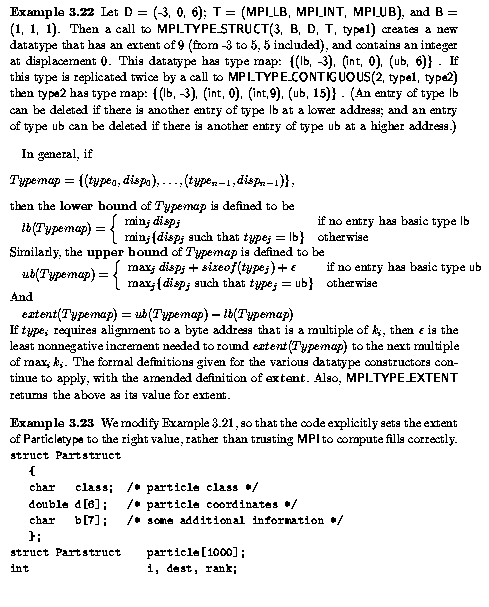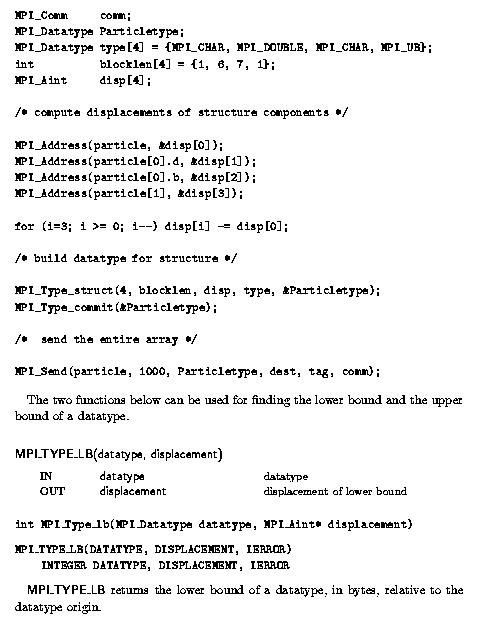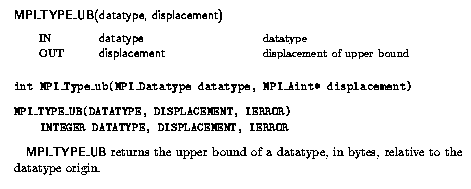Sometimes it is necessary to override the definition of
extent given in Section ![]() .
markersderived datatype, markers
Consider, for example, the code in Example
.
markersderived datatype, markers
Consider, for example, the code in Example ![]() in
the previous section.
Assume that
a double occupies 8 bytes
and must be double-word aligned.
There will be 7 bytes of padding after the first field and one byte of
padding after the last field of the structure Partstruct, and
the structure will occupy 64 bytes.
If, on the other hand, a double can be word aligned
only, then there will be only 3 bytes of padding after the first
field, and Partstruct will occupy 60 bytes.
The MPI library will follow
the alignment rules used on the target systems so that the extent of datatype
Particletype equals the amount of storage occupied by
Partstruct. The catch is that different
alignment rules may be specified, on the same system,
using different compiler options. An even more difficult problem is that
some compilers allow the use of pragmas in order to specify different alignment
rules for different structures within the same program. (Many
architectures can correctly handle misaligned values, but with lower
performance; different alignment rules trade speed of access for storage
density.) The MPI library will assume the default alignment rules. However,
the user should be able to overrule this assumption if structures are packed
otherwise.
alignment
in
the previous section.
Assume that
a double occupies 8 bytes
and must be double-word aligned.
There will be 7 bytes of padding after the first field and one byte of
padding after the last field of the structure Partstruct, and
the structure will occupy 64 bytes.
If, on the other hand, a double can be word aligned
only, then there will be only 3 bytes of padding after the first
field, and Partstruct will occupy 60 bytes.
The MPI library will follow
the alignment rules used on the target systems so that the extent of datatype
Particletype equals the amount of storage occupied by
Partstruct. The catch is that different
alignment rules may be specified, on the same system,
using different compiler options. An even more difficult problem is that
some compilers allow the use of pragmas in order to specify different alignment
rules for different structures within the same program. (Many
architectures can correctly handle misaligned values, but with lower
performance; different alignment rules trade speed of access for storage
density.) The MPI library will assume the default alignment rules. However,
the user should be able to overrule this assumption if structures are packed
otherwise.
alignment
To allow this capability, MPI has two additional ``pseudo-datatypes,'' MPI_LB and MPI_UB, MPI_LB MPI_UB that can be used, respectively, to mark the lower bound or the upper bound of a datatype. These pseudo-datatypes occupy no space ( extent(MPI_LB)=extent(MPI_UB)= 0 ). They do not affect the size or count of a datatype, and do not affect the the content of a message created with this datatype. However, they do change the extent of a datatype and, therefore, affect the outcome of a replication of this datatype by a datatype constructor.


